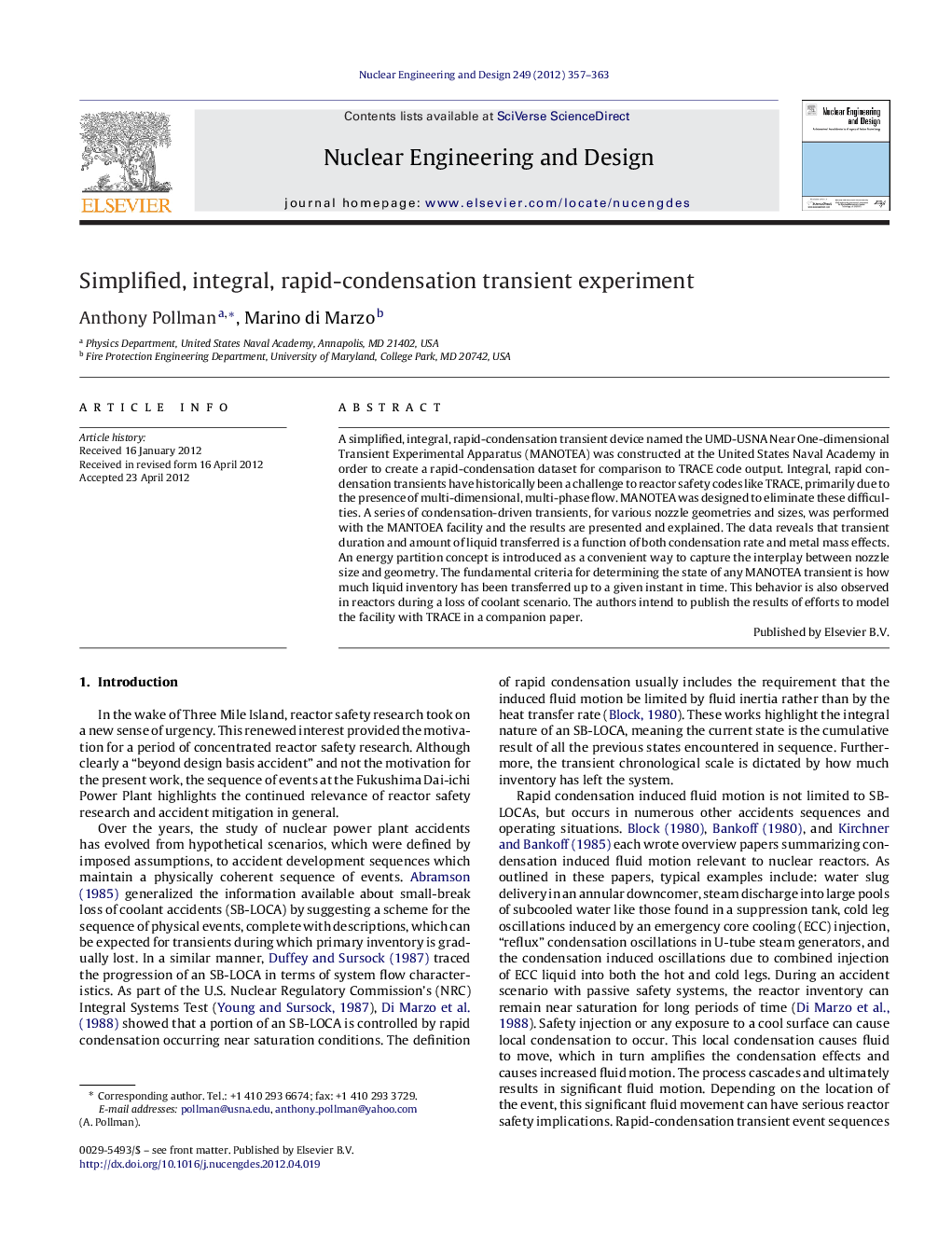| کد مقاله | کد نشریه | سال انتشار | مقاله انگلیسی | نسخه تمام متن |
|---|---|---|---|---|
| 297196 | 511750 | 2012 | 7 صفحه PDF | دانلود رایگان |

A simplified, integral, rapid-condensation transient device named the UMD-USNA Near One-dimensional Transient Experimental Apparatus (MANOTEA) was constructed at the United States Naval Academy in order to create a rapid-condensation dataset for comparison to TRACE code output. Integral, rapid condensation transients have historically been a challenge to reactor safety codes like TRACE, primarily due to the presence of multi-dimensional, multi-phase flow. MANOTEA was designed to eliminate these difficulties. A series of condensation-driven transients, for various nozzle geometries and sizes, was performed with the MANTOEA facility and the results are presented and explained. The data reveals that transient duration and amount of liquid transferred is a function of both condensation rate and metal mass effects. An energy partition concept is introduced as a convenient way to capture the interplay between nozzle size and geometry. The fundamental criteria for determining the state of any MANOTEA transient is how much liquid inventory has been transferred up to a given instant in time. This behavior is also observed in reactors during a loss of coolant scenario. The authors intend to publish the results of efforts to model the facility with TRACE in a companion paper.
► A simplified, integral, rapid-condensation transient device was constructed.
► A series of well scoped experiments, for various nozzle geometries, was conducted.
► The physical mechanisms dictating transient behavior where identified and described.
► A common transient sequences was identified.
► The transient sequence will be used to compare data to TRACE models.
Journal: Nuclear Engineering and Design - Volume 249, August 2012, Pages 357–363